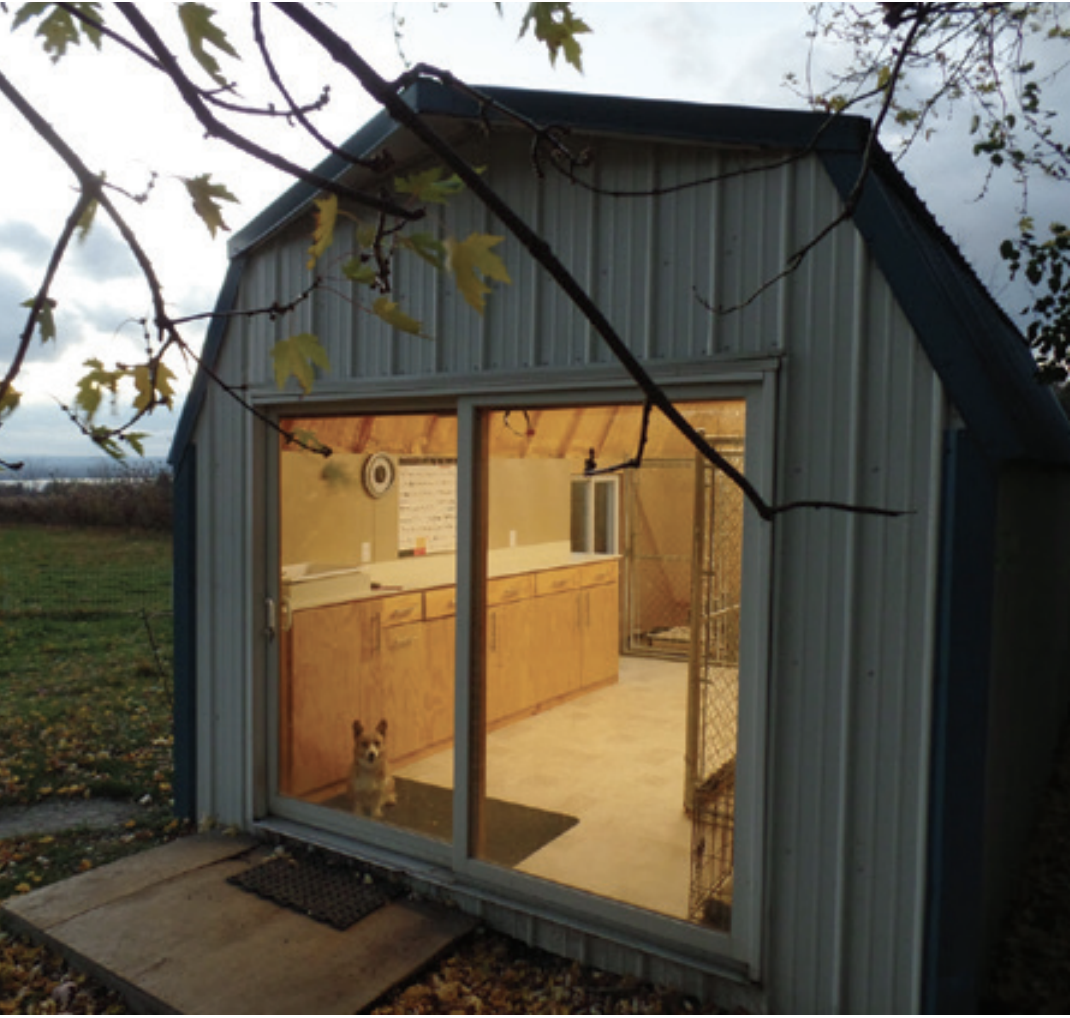
Call In: Fading Puppy Syndrome and Canine Herpes Virus
Chris Malon from A-to-Z Vet Supply talks in depth about Fading Puppy Syndrome and Canine Herpes
Virus.
Hi fellow dog breeders and canine lovers! My name is Timothy. I’m 18 and live in the Finger Lakes region of New York. I am a new breeder who has more passion than patience, and has so far spent more time reading about dog breeding than actually breeding dogs.
Written By: Timothy Freed
I started this journey around two years ago. I had not intended to be a dog breeder. No, I actually was more interested in sheep. I hoped to purchase a flock of registered ewes, and raise breeding stock for other shepherds. But I asked the advice of a very wise man, who happens to be my brother. And due to his advice, I now have a registered dog, rather than registered sheep, but I still hope to help shepherds. Now that might sound strange to you but keep reading…
The dog breed I selected originated in the rolling farmland of southwestern Wales. For hundreds of years they herded Welch farmers’ cattle and sheep, guarded over their homesteads, and killed the rats in their granaries. These sturdy little dogs look like foxes, and can be stubborn as the hardy famers of their homeland. Yes, you guessed it: the Pembroke Welsh Corgi.
MY SEARCH FOR A DOG
I began looking for a puppy. I didn’t really know what I was looking for. I wanted a registered puppy of course. And that should mean that it’s a quality animal, right? Well, I had some hard lessons to learn. I found a puppy online that was in my area, it looked cute, it looked like a corgi, and yes, it was registered. So with cash in hand I headed out to buy it. When I arrived at the gentleman’s place, I was a bit surprised. The puppies were in a tiny, dirty shed with a small outside run made of sagging chicken wire. The breeder handed me the puppy I had selected. Then he went off to try to find the registration paperwork. As I held the puppy, I noticed something odd. Every time it breathed, there was a strange rattling sound from its lungs. Just then, the gentleman came back. He hadn’t been able to find the paperwork. I enquired about the puppies breathing. He seemed nervous that I mentioned it, but reassured me that the vet had said that it would be just fine. So I very foolishly handed over the cash and headed home with my dog.
I decided to call the vet’s office, and check just to make sure that this was indeed all right. Unfortunately, the vet said that I had not been told the truth, and that I should probably return the puppy. So that afternoon I took my puppy back, and thankfully he refunded part of the payment.
This experience taught me two important lessons.
I finally found another puppy. This time it was in Lancaster, PA, and the experience was much better. I still did not know what to look for in breeding stock. But thankfully, Jenny has proven to be a very smart, healthy dog that exceeded my expectations.
Preparation for Breeding
I then began studying the breed in detail. And what a good breeder looks like. (Anybody think I should have done this first?) I bought books on breeding, training, health, and books on Pembrokes. I also spoke with many talented breeders and industry professionals. I went to NYPBA expo. (it was there I met the editor of this magazine) I also learned something else. Many veterinarians, preservationist breeders, and even folks in the public do not appreciate Amish/ Mennonite breeders. I came across this sentiment nearly every time I told folks I got my dog from PA. I began pondering why this is. And even more importantly, what I can do to change it. To sum up what I’ve learned so far, check out this diagram.

This illustrates three of the components that I want my breeding program to have. I think if we’d all focus on these areas in our bloodlines, we’d see our reputation as dog breeders in the Anabaptist community improve.
Health
In my breeding program, this is the first priority. One of the first things I did in preparation for breeding was getting a DNA test done on Jenny. This easy, inexpensive test provides important insights on improving our lines. Thankfully, Jenny tested clear for the five genetic conditions that are relevant to Pembrokes. These results can be certified with the OFA to provide an additional layer of verifiability. In Pembrokes, non-DNA diagnostic tests are just as important. They include hip, elbow, eye, cardiac, and patella tests. Check the official health recommendation of your breed’s national club; this is the minimum recommended testing. It is what’s required for C.H.I.C. certification, and incidentally AKC’s Bred with H.E.A.R.T. program. For Pembrokes, hip and eye tests are recommended. I also did elbow, cardiac, and patella tests for good measure. These tests show our customers that we’ve been purposeful in breeding genetically healthy dogs; and we can reasonably expect higher prices for our puppies.
Temperament
Hopefully our dogs don’t bite. At least not more than their food. But stable temperaments include much more than that. Many of our dog breeds were bred to work. Perhaps to herd sheep, retrieve ducks for a hunter, guard properties, hunt deer, raccoons, or foxes. Understanding that what our breeds were bred to do helps us understand their temperaments, and how best to train them. I also believe that proper socialization and training are as important to stable temperaments as genetics are, and I see this as a weak point in many kennels.
‘Come’, ‘sit’ and ‘stay’ have made Jenny a much easier dog to live with. It also makes it possible to get an entry-level certification on her pedigree, such as AKC Canine Good Citizen test, a simple ten-point test that adds some letters to the end of her name and shows my customers that she is trainable, and has a stable temperate. I also plan to train her to herd sheep, so every day I take her with me to do the chores. (We have around 60 Texel sheep) She soon showed that she has a strong herding instinct, so am planning to take her for formal classes next spring. Not all this is required to sell puppies. But it does show puppy customers that I care about the temperaments in my line, and that my dogs can still perform the work they were bred to do.

Conformation
Here’s the hardest one, which could be the subject of another article in itself. It’s hard because many of our bloodlines do not measure up to the breed standards, which are to be the blueprints for our breeds. Some might say this doesn’t matter, because we’re just selling pets. However, deteriorating conformation is often trailed by deteriorating health and temperaments. Breed standards show what the perimeters are for each dog breed: how they should be structured, how they should walk, what they should weigh, etc. When our dogs are far from these perimeters, they will not be able to do the jobs for which they are designed, and can be susceptible to other health problems. For instance, many Pembrokes in our kennels are too fine boned, long legged, high backed, and lack the instinct or stamina needed to herd sheep or cattle. Of course, there are things such as ear shape and coat color that will not affect the dog’s health, but still should be avoided. Blue-merle and fluffy corgi will at times command high prices, but these Corgis are not Pembrokes as they were bred to be.
Jenny is at best a fair example of the breed. She will never win a show. However, I did breed her because of her other good traits. I hope to acquire some dogs that are conformation quality, but this is very hard to do. Those who have bloodlines that are show quality are very protective of them, and have high walls of distrust for breeders like us. So how could we win the trust necessary to use a titled stud or purchase conformation quality puppies from these breeders? My goal is to go as far as I can in the other two areas I outlined. If the dogs I breed are above board on genetic health, and have excellent temperaments, with titles in performance sports (such as herding) to prove it, I think it will be possible to find someone that will trust me to use their stud dog, or buy a puppy.
Conclusion
Though it takes time, money, and effort to get there, breeders with dogs that score high in all three areas, will succeed even when the puppy market is slow. They will command much higher prices for their puppies, and will win the respect of preservationist breeders, veterinarians, and potential puppy buyers. I look forward to the day when I can say, “I got a dog from an Amish/Mennonite breeder in PA/ NY/IN/OH. And the response will be, “Great! Those folks breed truly great dogs!” In the mean time, I’m counting down the days to my first litter. I hope to go much farther with FOXFUR- EWE CORGIS. My goal is to produce happy healthy foxes that have excellent health, structure, and herding instinct, whether they share their life with you, or herd ewes in the back pasture.

Chris Malon from A-to-Z Vet Supply talks in depth about Fading Puppy Syndrome and Canine Herpes
Virus.

Appropriate desensitization and counter conditioning to handling is important for all dogs in adulthood to ensure their comfort and minimize fearfulness.

USDA APHIS Animal Care’s main mission is to ensure the welfare of animals. We do this by performing unannounced inspections. You may be nervous about having a government agency do a surprise visit and inspect your business. What will they say and do? What questions will they ask? How will they act? Here are some things you can expect during an inspection.